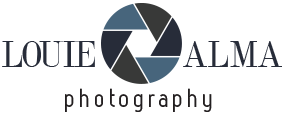Safely Clean Fungus in Vintage Camera Lenses (VIDEO)
More and more photographers are discovering the joys of using inexpensive vintage lenses on modern mirrorless digital cameras. These relics of the past often deliver excellent image quality with a unique look and superior all-metal construction as compared to their modern counterparts.
In fact, you may have some old glass lurking in the back of a cabinet. If not, there are great deals to be found on the used market. All you need is and an affordable adapter in the right mount, and a willingness to forego electronic features and experiment with manual focus. The nine-minute video below explains why fungus happens in the first place and storage storage tips for preventing it.
According to our unnamed instructor from the interesting Vintage Optiks YouTube channel, these unnerving infestations occur and grow over time when tiny dust particles and moisture gets trapped inside a lens. As the fungus spores are exposed to a warm environment, especially with high humidity, they quickly begin to grow.
Worse yet, “when left unattended the fungus can spread throughout a lens and completely cover the elements.” There are a few basic supplies you’ll need to gather before attempting the remedial process outlined below, and you’ll find links in the description beneath the video for each of these cheap products (although it’s likely that you already have most of them at home).
You’ll need a bottle of hydrogen peroxide (3% solution), a common Rocket air blaster, a pair of vinyl gloves, alcohol wipes, and a microfiber cloth. Rounding out the supplies are an appropriate spanner wrench for dismantling the lens, rubber vacuum pads, and what the instructor refers to as a “lens sucker.”
The remainder of this nine-minute episode is a step-by-step demonstration of employing these simple tools is the correct sequence to give new life to a contaminated lens. Be sure to visit the Vintage Optiks YouTube channel for more helpful videos on choosing and using affordable great glass from the past.
We also recommend watching another gear-maintenance tutorial we featured recently with an equally important procedure for cleaning a dirty sensor in your camera.




 Enter the Macro Focusing Rail. It enables you to make micro-fine adjustments easily while keeping the entire setup rock-solid. The Oben Macro Focusing Rail also allows rotation on the camera’s vertical axis which is a huge plus.
Enter the Macro Focusing Rail. It enables you to make micro-fine adjustments easily while keeping the entire setup rock-solid. The Oben Macro Focusing Rail also allows rotation on the camera’s vertical axis which is a huge plus.









